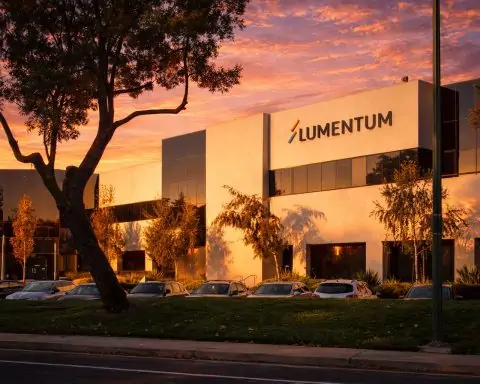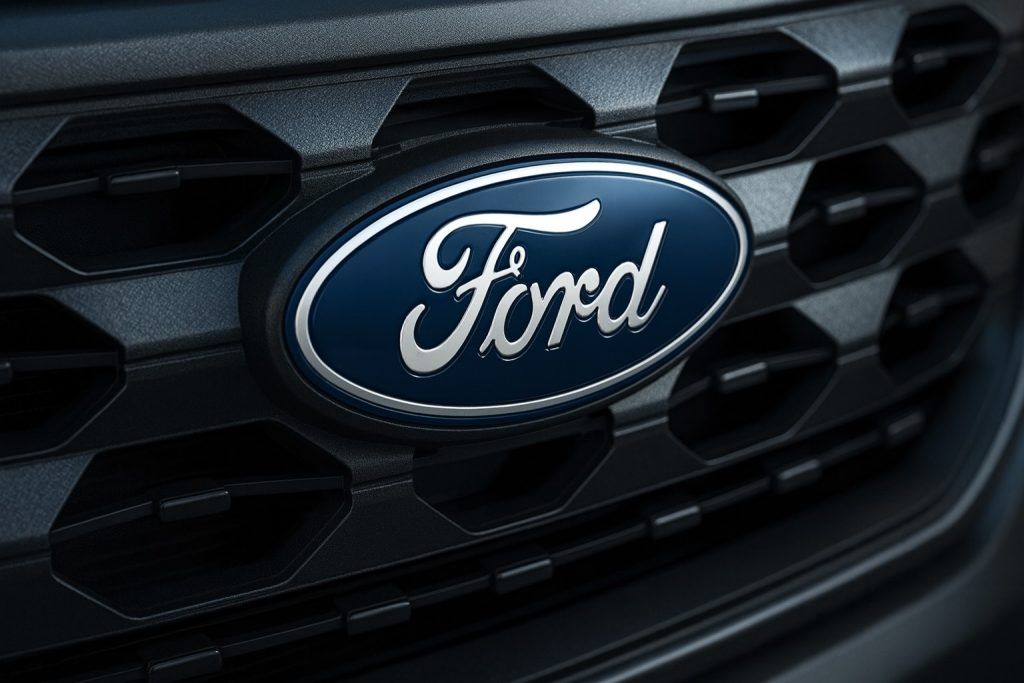- Soaring Stock: International Consolidated Airlines Group (IAG) shares trade around 410 pence, their highest level since early 2020 and within ~7% of a record peak [1]. The stock has surged ~360% from pandemic lows (~84p) and is up about 90% in the last 12 months, reflecting a dramatic post-Covid recovery [2] [3].
- Rally Drivers: Robust travel demand and turnaround efforts have powered IAG’s rebound. First-half 2025 revenue jumped 8% to €15.9 billion, with operating profit up 43% to €1.88 billion [4] [5]. High-margin transatlantic routes (British Airways, Iberia) are booming, and IAG slashed net debt to ~€5.4 billion from €7.5 billion a year ago [6].
- Analysts Bullish: Major banks see more upside. Citigroup just hiked its IAG price target to 620p, implying ~54% upside [7]. Six analysts rate IAG a “Buy” with a consensus target ~442p, and none of its recent gains have dampened optimism [8]. IAG’s market cap nears £19 billion [9].
- Valuation Still Low: Despite the rally, IAG trades on a low price-to-earnings ratio ~6–8, far below the FTSE 100 average (~18) [10] [11]. Strong earnings have outpaced its share price, making the stock look cheap relative to profits. Citi and Deutsche Bank both see IAG undervalued, noting its cash generation and returns are among the strongest in the sector [12].
- Top Pick Advantages: Morgan Stanley recently named IAG its “top pick” among European airlines, citing British Airways’ dominant Heathrow slots and premium transatlantic focus as key advantages [13] [14]. With over half of Heathrow slots, IAG is uniquely positioned to benefit from disciplined capacity and high-margin U.S. routes [15].
- Shareholder Returns Back: After pandemic cuts, IAG is resuming shareholder payouts. The group plans ~€1.5 billion in dividends and buybacks, and analysts forecast a 2.5% dividend yield in 2025, rising to ~2.8% in 2026 [16] [17]. This reflects confidence in IAG’s cash flow and balance sheet improvements.
- Outlook & Risks: All eyes are on Q3 earnings due November 7, where consensus expects ~€2.1 billion operating profit – a big jump from last year [18]. Hitting this could push shares toward all-time highs (~440p) [19]. However, economic headwinds remain a caution. Analysts warn that any global downturn or geopolitical shock could slow travel demand [20]. IAG’s success also hinges on fuel costs and maintaining pricing power, especially as low-cost rivals face fare pressures in a crowded short-haul market [21] [22].
Shares Near Pre-Pandemic Highs After a 360% Rebound
IAG’s share price has staged a stunning comeback from its pandemic plunge. In October 2020, amid travel bans, IAG traded below 90p. Today it hovers around 410p, its highest level since February 2020 [23]. The stock has more than quadrupled (↑~360%) off the Covid-era bottom [24]. Just in the past year, IAG is up roughly 90% [25], vastly outperforming the broader FTSE 100 index. This rally has put IAG within touching distance of its record high (~440p) set pre-pandemic [26] – an extraordinary turnaround for the British Airways and Iberia owner.
Driving the surge is surging travel demand and a return to profitability. IAG was one of the pandemic’s hardest-hit companies, but the reopening of global travel unleashed “revenge travel” and pent-up demand for flights. As a result, IAG’s market capitalization has swelled to about £18–19 billion [27], and the stock was among FTSE 100 leaders during recent market rallies. For instance, during a mid-October uptick, IAG shares gained around 1–2% intraday alongside other blue-chips [28]. Investors now see IAG not as a distressed airline but as a recovery success story riding a multi-year uptrend.
Strong Results Fueling the Comeback
Behind IAG’s stock resurgence are much-improved financials. The company has executed a turnaround, cutting costs and capitalizing on the travel rebound. In the first half of 2025, IAG’s revenue jumped 8% year-on-year to €15.9 billion [29]. Profits have rebounded even faster – operating profit in H1 2025 surged 43% to €1.87 billion [30], in line with analysts’ optimistic forecasts. These results confirm that passenger demand remains robust, especially on lucrative long-haul routes. IAG’s transatlantic business (British Airways flying to North America) is booming, benefiting from resilient corporate and premium leisure travel [31]. The company noted that even with economic uncertainties, transatlantic bookings have held up well.
Crucially, IAG has repaired its balance sheet. During the downturn, debt ballooned as IAG took on loans to survive. But over the past year, the group has aggressively deleveraged – net debt dropped to ~€5.4 billion, down from €7.5 billion a year prior [32]. This €2 billion debt reduction reflects strong cash flows from operations and disciplined capital management. The healthier finances allowed IAG to restart shareholder returns. Management plans to return about €1.5 billion to investors via dividends and buybacks [33]. Indeed, IAG is set to pay its first post-Covid dividend, and analysts forecast a dividend yield of ~2.5% in 2025, rising to ~2.75% in 2026 [34]. This signals confidence that IAG’s earnings recovery is sustainable.
IAG’s operating margins are also on the mend. In fact, the company has laid out ambitious medium-term goals – aiming for a 12–15% operating margin in the coming years [35]. British Airways is targeting a 15% margin by growing its premium cabin and loyalty program revenues [36]. Iberia (the Spanish arm) likewise has bold profit targets. These plans suggest management sees further efficiency gains and revenue opportunities ahead, building on the momentum from 2024–2025.
Analysts: “Top Pick” Status and Upside Potential
Market experts largely agree that IAG’s story has more room to run. In mid-October, Morgan Stanley initiated coverage of Europe’s airlines and bluntly described the landscape as “Short Haul Pain, Long Haul Gain” [37]. Their top pick? IAG. Morgan Stanley’s analysts gave IAG an Overweight rating, arguing that its unique strengths position it best for the current cycle [38]. “British Airways’ dominant slot position at Heathrow and strong premium cabin mix leave the group best positioned to benefit from disciplined supply and high-margin U.S. routes,” the Morgan Stanley team noted [39]. In other words, IAG’s fortress hub at London Heathrow – where it controls over half the take-off/landing slots – is a powerful competitive moat. High demand on transatlantic flights (which are among the world’s most profitable routes) means IAG can keep planes full and fares firm, even as some European rivals struggle with price wars in short-haul markets [40].
Morgan Stanley also highlighted IAG’s improving finances. They expect consensus profit forecasts will be revised upward, noting the market may be underestimating IAG’s unit cost improvements and fuel efficiency [41]. Thanks to strong cash flow, “free cash flow [is] strengthening into 2026–27, creating scope for shareholder returns to exceed current guidance,” the analysts wrote [42]. In fact, Morgan Stanley believes IAG and Ryanair lead the sector in profits per capacity and can sustain multi-year share buybacks given their cash generation [43]. Importantly, they pointed out that IAG still trades at a discount to U.S. airline peers despite its turnaround [44]. This undervaluation underpins their bullish stance.
Other analysts are echoing the optimism. Just last week, Citigroup raised its price target on IAG from 390p to 620p – a huge upgrade that implies +53% upside from current levels [45]. Citi reiterated a “Buy” rating, confident that IAG’s earnings rebound justifies a much higher share price. Several other banks upped targets recently as well: for example, Royal Bank of Canada boosted their IAG target from 440p to 500p (Outperform) after summer results, and Deutsche Bank now values the stock at 460p (Buy) [46]. In total, six major analysts rate IAG a Buy, with virtually no sell ratings, and the average target price is ~442p [47]. That consensus target suggests modest upside of ~8% beyond today’s price – but many analysts clearly see potential for far more gains if IAG continues executing well. Notably, even at ~410p, IAG’s valuation metrics look low. MarketBeat data shows IAG at a P/E ratio around 6.2 (trailing) [48] – extraordinarily low for a profitable company – and a PEG (price/earnings-to-growth) ratio of just 0.2, indicating the stock is cheap relative to its growth rate [49]. Despite the share price climbing 255% in three years, IAG’s P/E is only ~8, versus ~18 for the FTSE 100 [50]. This suggests investors haven’t fully priced in the earnings recovery, a point not lost on bullish experts.
Some market commentators have compared IAG to its peers to assess value. For instance, a Motley Fool UK analysis noted that IAG’s forecast 2025 EBITDA (~€6.8 billion) dwarfs that of smaller rival Jet2 (~£739 million), yet IAG’s stock still trades on a lower earnings multiple [51]. The takeaway is that IAG may still be a bargain among airline stocks – assuming it can keep up the current performance.
Outlook: Earnings Catalyst and Challenges Ahead
Looking forward, IAG faces a pivotal moment with its Q3 2025 earnings report due on November 7. This report will cover the peak summer travel season, typically the most lucrative quarter for airlines. Analysts expect IAG to post a substantial profit jump: consensus calls for around €2.09 billion in operating profit for Q3, a large increase year-on-year [52]. Hitting (or exceeding) these numbers could validate the bullish thesis and potentially propel the stock to new highs. Indeed, Invezz.com notes that bulls are eyeing IAG’s all-time high of ~440p, potentially to be achieved after the results [53]. A positive surprise on Nov 7 – such as stronger earnings or upbeat guidance – might be the catalyst to finally push IAG shares above that record threshold [54].
There are, however, risks on the radar. The airline industry is cyclical and highly sensitive to external shocks. One key concern is the macro-economic environment: if Europe or the U.S. slips into recession, discretionary air travel could soften. IAG’s management has acknowledged that economic uncertainty and geopolitical tensions (for example, wars or global unrest) could impact performance [55]. Thus far, demand has been resilient, but a downturn would test how well IAG can maintain its newfound profitability. Additionally, fuel prices remain a wild card. Jet fuel is one of IAG’s biggest costs; any spike in oil prices (perhaps due to geopolitical events) can squeeze margins and investor sentiment. Fortunately, fuel costs in 2025 have been relatively stable or lower than last year, which has helped IAG – British Airways’ owner said its profits have soared as fuel costs cooled off from prior highs [56].
Competition is another factor. While IAG has strength in long-haul markets, Europe’s short-haul sector is crowded. Low-cost carriers like easyJet, Wizz Air, and Jet2 are adding capacity aggressively, which is driving fare competition. Morgan Stanley warns that UK leisure flight capacity this winter is up to four times pre-pandemic levels for budget airlines, leading to “declining yields into next summer” for those carriers [57]. This pricing pressure in the short-haul market could indirectly affect IAG’s Vueling and Aer Lingus units, though they are smaller portions of the group. The flip side is that IAG’s focus on long-haul and business travel provides some insulation – as noted, premium transatlantic demand remains robust and corporate travel is holding up, allowing IAG to maintain pricing power where others cannot [58].
Regulatory and strategic moves will also shape IAG’s future. The company recently abandoned a planned acquisition of Spain’s Air Europa after regulators raised competition concerns, opting instead to grow organically [59] [60]. Investors cheered that decision – IAG’s stock jumped ~7% when the deal was dropped, as it saved €350 million in breakup fees and removed uncertainty [61] [62]. Now the market is watching if IAG will pursue other opportunities, such as a potential stake in Portugal’s TAP Air if it comes up for sale. However, management seems focused on consolidating gains and improving operations rather than risky takeovers. This disciplined approach has bolstered investor confidence.
Bottom Line: IAG’s share price renaissance in 2025 has been nothing short of remarkable. The airline group emerged from the Covid crisis leaner and more profitable, and its stock now flirts with multi-year highs. Experts largely agree that the recovery still has legs – IAG is delivering strong results, trading cheaply, and benefiting from industry trends that favor its network. Upcoming earnings on Nov 7 will be a key litmus test. If IAG can confirm continued profit momentum and perhaps give optimistic guidance (or reinstate dividends as planned), it could fuel the next leg up for the stock. Nonetheless, investors should remain mindful of the usual airline caveats: economic swings, oil prices, and competition can all create turbulence. For now, though, IAG appears to have the wind at its back, with analysts and shareholders optimistic that this high-flying stock still has room to climb [63] [64].
Sources: Recent market analysis and news on IAG’s stock performance [65] [66]; IAG financial results and expert commentary [67] [68]; analyst price targets and ratings from MarketBeat (Oct 24, 2025) [69] [70]; Morgan Stanley European airlines outlook [71] [72]; TS² TechStock daily market updates [73].
References
1. uk.investing.com, 2. uk.investing.com, 3. www.el-balad.com, 4. uk.investing.com, 5. www.el-balad.com, 6. uk.investing.com, 7. www.marketbeat.com, 8. www.marketbeat.com, 9. uk.investing.com, 10. www.el-balad.com, 11. www.marketbeat.com, 12. www.marketbeat.com, 13. www.investing.com, 14. www.el-balad.com, 15. www.investing.com, 16. uk.investing.com, 17. www.el-balad.com, 18. uk.investing.com, 19. uk.investing.com, 20. www.el-balad.com, 21. www.investing.com, 22. www.investing.com, 23. uk.investing.com, 24. uk.investing.com, 25. www.el-balad.com, 26. uk.investing.com, 27. uk.investing.com, 28. ts2.tech, 29. uk.investing.com, 30. uk.investing.com, 31. uk.investing.com, 32. uk.investing.com, 33. uk.investing.com, 34. www.el-balad.com, 35. uk.investing.com, 36. uk.investing.com, 37. www.investing.com, 38. www.investing.com, 39. www.investing.com, 40. www.investing.com, 41. www.investing.com, 42. www.investing.com, 43. www.investing.com, 44. www.investing.com, 45. www.marketbeat.com, 46. www.marketbeat.com, 47. www.marketbeat.com, 48. www.marketbeat.com, 49. www.marketbeat.com, 50. www.el-balad.com, 51. uk.finance.yahoo.com, 52. uk.investing.com, 53. uk.investing.com, 54. uk.investing.com, 55. www.el-balad.com, 56. uk.finance.yahoo.com, 57. www.investing.com, 58. www.investing.com, 59. www.reuters.com, 60. www.reuters.com, 61. www.reuters.com, 62. www.reuters.com, 63. www.marketbeat.com, 64. www.el-balad.com, 65. uk.investing.com, 66. www.el-balad.com, 67. uk.investing.com, 68. www.investing.com, 69. www.marketbeat.com, 70. www.marketbeat.com, 71. www.investing.com, 72. www.investing.com, 73. ts2.tech







